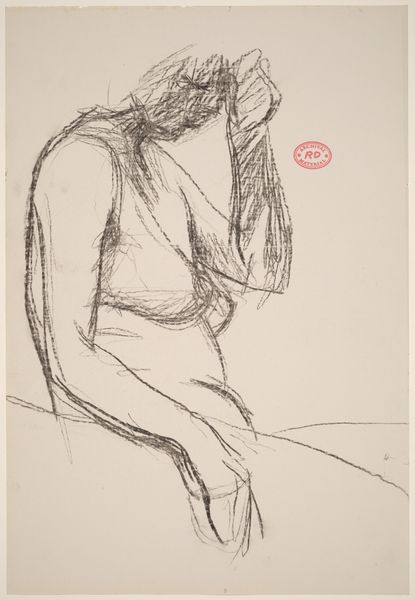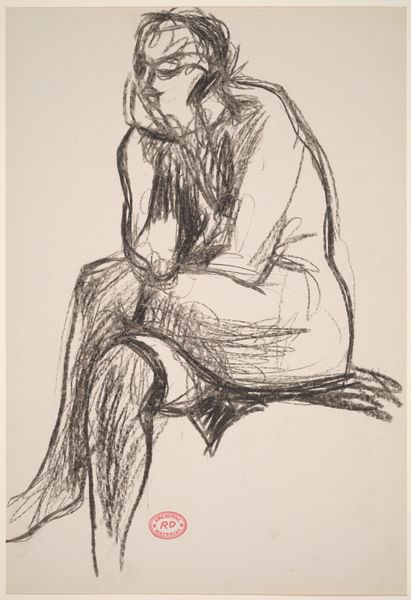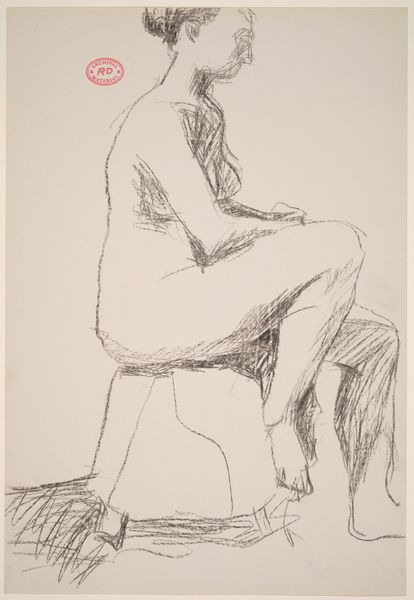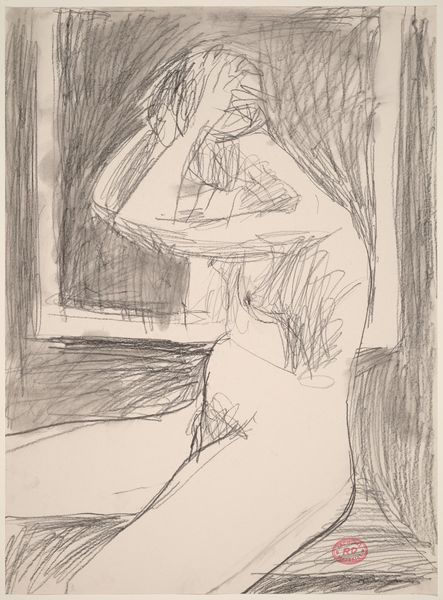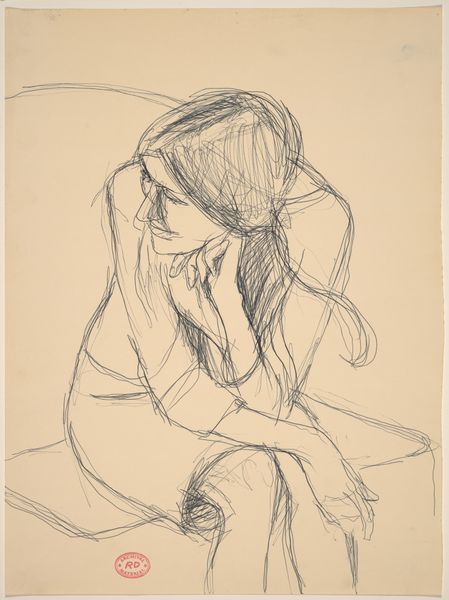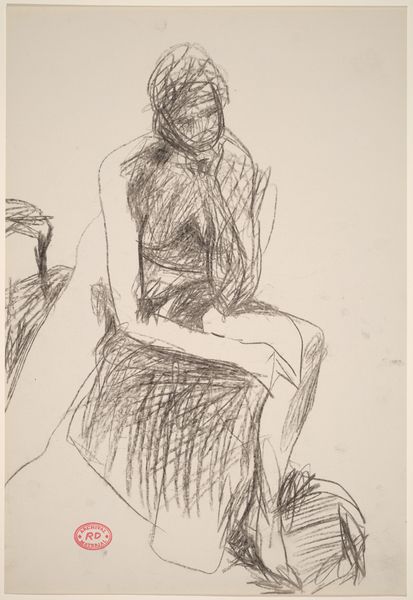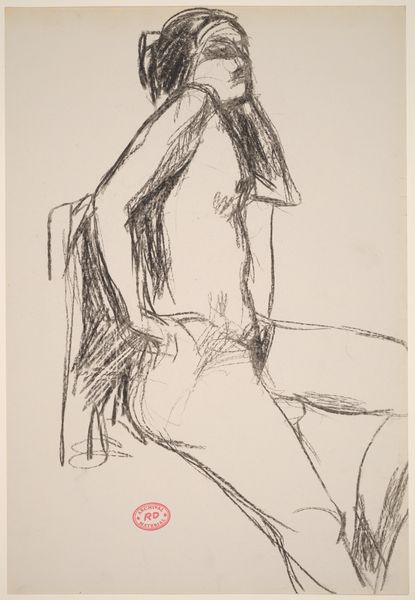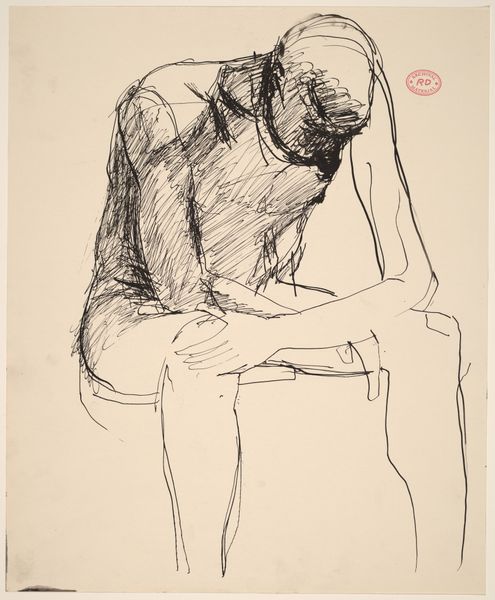![Untitled [nude resting her elbow on her left knee] by Richard Diebenkorn](/_next/image?url=https%3A%2F%2Fd2w8kbdekdi1gv.cloudfront.net%2FeyJidWNrZXQiOiAiYXJ0ZXJhLWltYWdlcy1idWNrZXQiLCAia2V5IjogImFydHdvcmtzLzhhZmE4NTJlLTJlNDQtNDMxNC04OTdkLWYzM2QwMzA2M2NmMS84YWZhODUyZS0yZTQ0LTQzMTQtODk3ZC1mMzNkMDMwNjNjZjFfZnVsbC5qcGciLCAiZWRpdHMiOiB7InJlc2l6ZSI6IHsid2lkdGgiOiAxOTIwLCAiaGVpZ2h0IjogMTkyMCwgImZpdCI6ICJpbnNpZGUifX19&w=3840&q=75)
Untitled [nude resting her elbow on her left knee] 1955 - 1967
0:00
0:00
drawing, pencil
#
portrait
#
drawing
#
figuration
#
bay-area-figurative-movement
#
pencil
#
portrait drawing
#
nude
Dimensions: overall: 43.2 x 31.8 cm (17 x 12 1/2 in.)
Copyright: National Gallery of Art: CC0 1.0
Curator: Here we have an untitled pencil drawing by Richard Diebenkorn, created sometime between 1955 and 1967. It depicts a nude figure resting her elbow on her left knee. Editor: The first impression is pensive. There's an incompleteness, almost tentative quality in the lines; it seems like the start of something, a process. You can almost feel the graphite dust under your fingers, imagining how the artist shifted the weight, finding the right pose, deciding how much or how little detail to give to each body part and the surface it leans upon. Curator: Indeed, Diebenkorn was deeply invested in the process of drawing. The pose itself carries symbolic weight; the figure lost in thought has been an artistic trope for centuries. It speaks to inner contemplation, melancholy, or perhaps simple fatigue. Editor: It is intriguing how he hasn't bothered filling out or closing forms completely. See where the model’s stomach should be, or the lack of delineation of her legs below her left knee, and the scribbly shading that acts to place, or locate the woman spatially—these passages seem unfinished in their own right. What kind of paper was available? And how did he source it? Did he draw often on this specific type of paper? You start asking what informed each compositional choice when a work has an immediate air of finality. Curator: These rapid, economical lines certainly allow Diebenkorn to suggest a mood—transient, uncertain—with very few strokes. Also notice how the darkness of the figure’s hair contrasts with the comparative lightness of her limbs and torso; it seems a deliberate way to shift visual focus towards her face, or what little of it we can see. She seems almost to be turning away from our gaze. It becomes an almost archetypal depiction of loneliness. Editor: You make an important point—a sort of cultural code becomes manifest here! Thinkers from Heidegger onward remind us that making and creating are always about *revealing* materials—light against dark to denote interiority vs exteriority and more; to *show*, from different angles, something inherent to that material interaction itself. Graphite can be made and purchased everywhere, but this work captures, in all its "unfinishedness", the very beginnings of the artistic process through available means and tools, without being overburdened with a demand for the absolute, perfectly finished image. Curator: A wonderful point about the potential inherent in ‘beginnings.’ It really makes one pause and think differently about ‘finished’ artworks versus the journey itself. Editor: Exactly! It forces us to reconsider how those available material beginnings come to inform any cultural product along its trajectory.
Comments
No comments
Be the first to comment and join the conversation on the ultimate creative platform.

